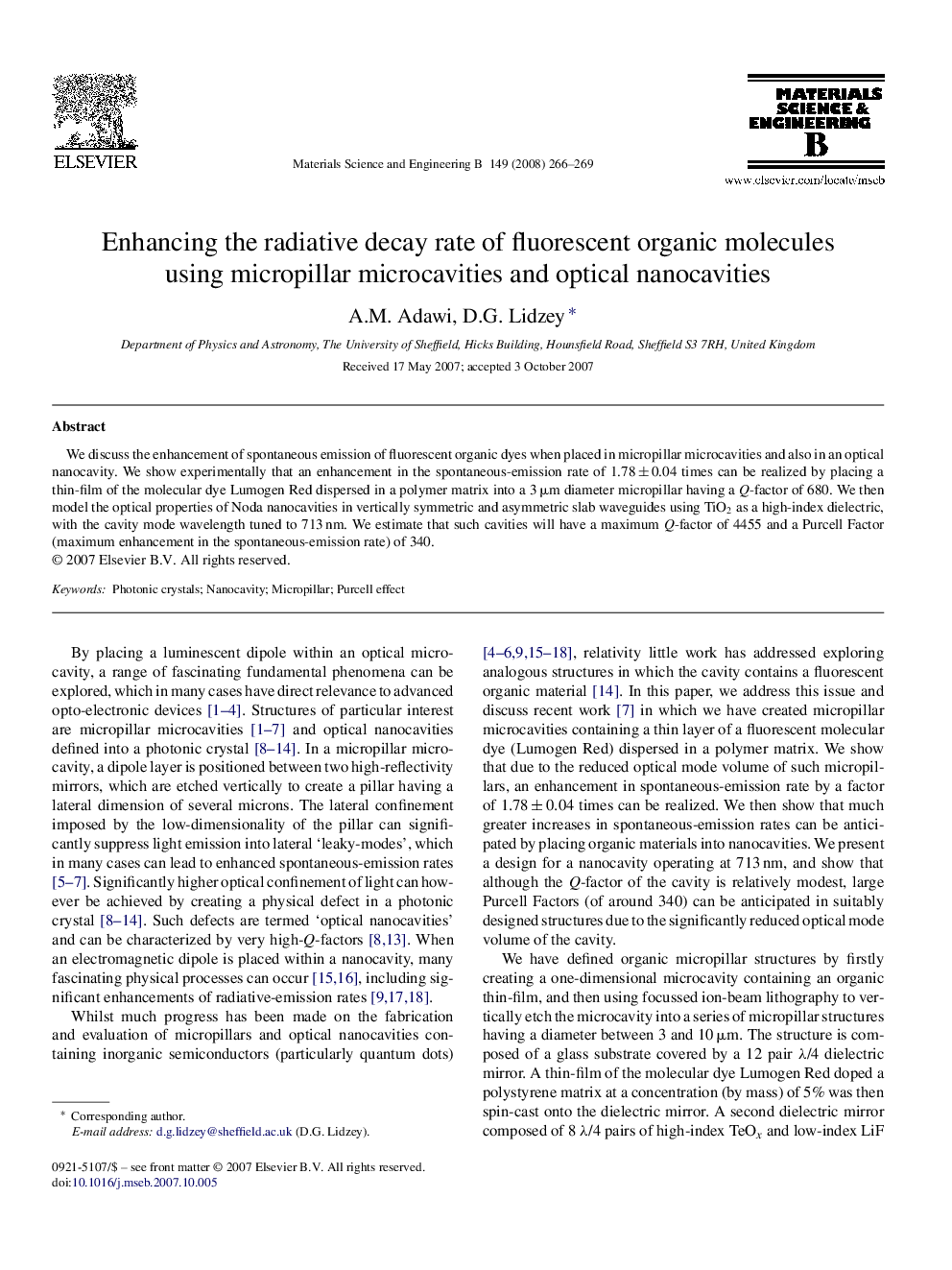| Article ID | Journal | Published Year | Pages | File Type |
|---|---|---|---|---|
| 1531308 | Materials Science and Engineering: B | 2008 | 4 Pages |
We discuss the enhancement of spontaneous emission of fluorescent organic dyes when placed in micropillar microcavities and also in an optical nanocavity. We show experimentally that an enhancement in the spontaneous-emission rate of 1.78 ± 0.04 times can be realized by placing a thin-film of the molecular dye Lumogen Red dispersed in a polymer matrix into a 3 μm diameter micropillar having a Q-factor of 680. We then model the optical properties of Noda nanocavities in vertically symmetric and asymmetric slab waveguides using TiO2 as a high-index dielectric, with the cavity mode wavelength tuned to 713 nm. We estimate that such cavities will have a maximum Q-factor of 4455 and a Purcell Factor (maximum enhancement in the spontaneous-emission rate) of 340.
